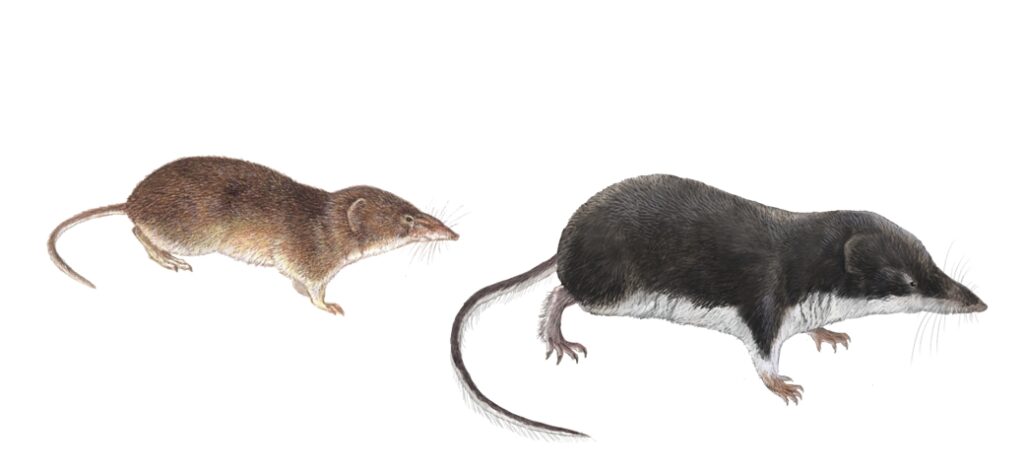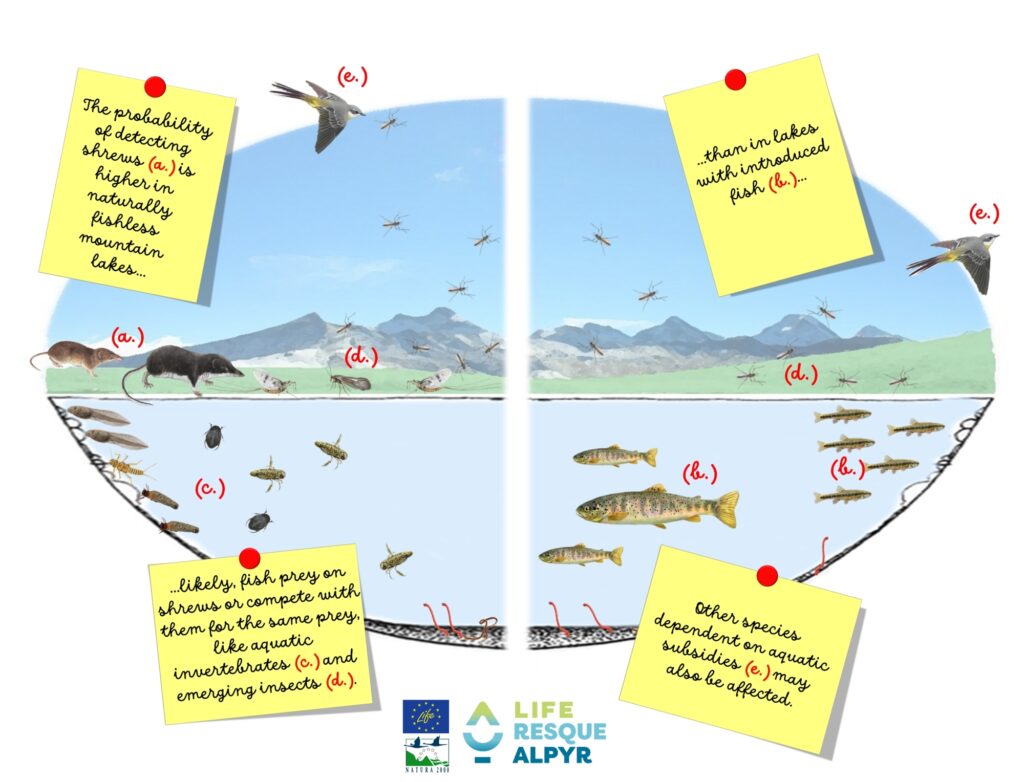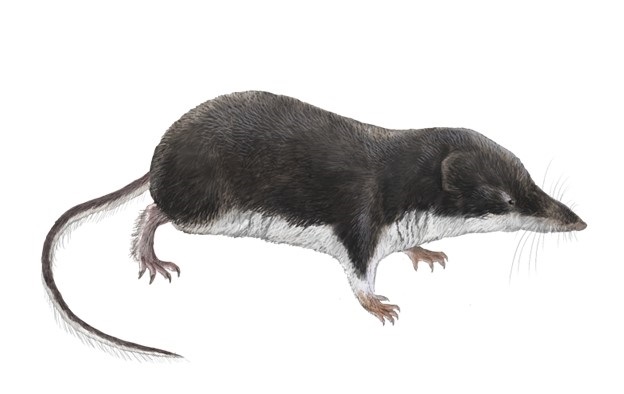A new study reveals that the introduction of fish into high-mountain lakes significantly disrupts biodiversity in these ecosystems, directly impacting shrews. Lakes containing fish show a notable decline in aquatic invertebrate populations, an essential food source for these small insectivorous mammals. Furthermore, large fish can prey on the shrews themselves, threatening their survival and altering the ecological balance of high-mountain aquatic ecosystems.
High-mountain lakes are naturally isolated from lower rivers by physical barriers that have prevented fish from colonizing them naturally. However, fish are now found in a considerable number of these lakes due to historical introductions. The introduction of fish in these lakes negatively affects native fauna, disrupts the structure and balance of the entire ecosystem, and alters the food web.
The study, published in Biological Conservation by researchers from the LIFE RESQUE ALPYR project, confirms that lakes with fish exhibit a significant reduction in aquatic invertebrates, leading to food competition that is disadvantageous for shrews, affecting their distribution and survival.
Shrews at Risk: Competition and Predation
Shrews, often mistaken for small mice, are not rodents but small insectivorous predators, more similar to moles or hedgehogs. Two species in particular—the Eurasian water shrew (Neomys fodiens) and the Valais shrew (Sorex antinorii)—are especially vulnerable to changes in these ecosystems.

These shrews depend on lakes to hunt aquatic and terrestrial invertebrates, and the presence of fish creates direct competition for this resource. Additionally, larger fish may prey on shrews, driving them away from areas close to the lakes.
Studying the Distribution and Diet of Shrews
To study the impact of this competition, researchers placed plastic tubes baited with dried insects and crustaceans around over 40 high-mountain lakes.
This non-invasive technique allows for the collection of shrew droppings, which are then analyzed through metabarcoding, a molecular method that identifies the species, its distribution, and its diet. Results confirmed that shrew presence is much more common in lakes without fish.
With these findings, the authors hope to raise awareness about the need to preserve high-mountain ecosystems and to encourage fisheries management that promotes the sustainability and biodiversity of these unique habitats.





